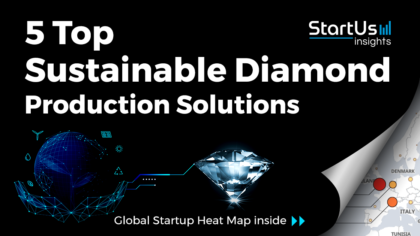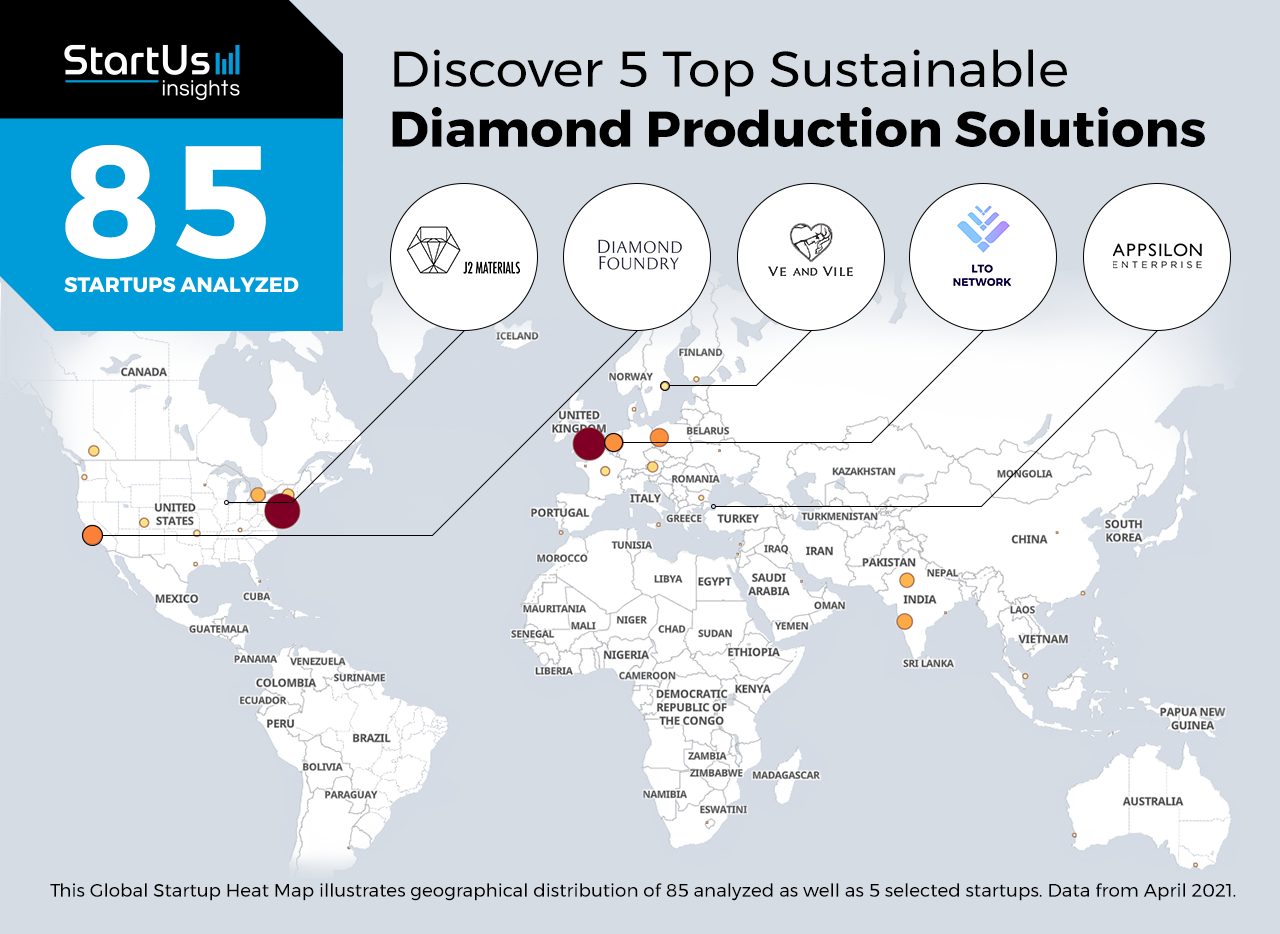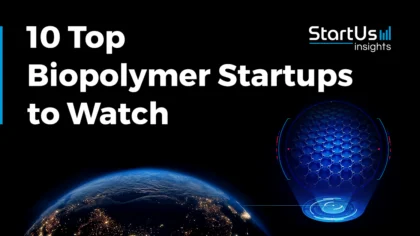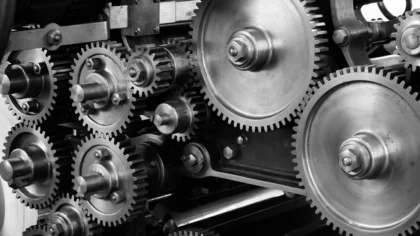Accelerate Productivity in 2025
Reignite Growth Despite the Global Slowdown
Staying ahead of the technology curve means strengthening your competitive advantage. That is why we give you data-driven innovation insights into the manufacturing industry. This time, you get to discover 5 hand-picked sustainable diamond production solutions.
Global Startup Heat Map highlights 5 Top Sustainable Diamond Production Solutions out of 85
The insights of this data-driven analysis are derived from the Big Data & Artificial Intelligence-powered StartUs Insights Discovery Platform, covering 1.379.000+ startups & scaleups globally. The platform gives you an exhaustive overview of emerging technologies & relevant startups within a specific field in just a few clicks.
The Global Startup Heat Map below reveals the distribution of the 85 exemplary startups & scaleups we analyzed for this research. Further, it highlights 5 manufacturing startups that we hand-picked based on criteria such as founding year, location, funding raised, and more. You get to explore the solutions of these 5 startups & scaleups in this report. For insights on the other 80 sustainable diamond production solutions, get in touch.
Appsilon grows Diamonds with Chemical Vapor Deposition (CVD)
The high environmental and social toll during mining and recovery, as well as transportation of natural diamonds, reduce the demand for the product. Although diamond manufacturing companies pledge to decrease carbon dioxide emissions and mitigate water pollution from acid mine drainage, the rate of change remains slow. Therefore, startups develop solutions that enable diamond production in a laboratory.
Turkish startup Appsilon advances the CVD technique for lab-based diamond production. The technique requires the heating of hydrocarbon gas to the temperature at which carbon atoms separate from their molecular bonds and land on a seed of previously grown diamond, forming vertical layers. Following this process, the startup’s lab-grown diamonds are identical in chemical and physical properties to earth-mined diamond stones. Aside from its traditional application in jewelry, Appsilon’s precious stones find applications for diamond plates, as well as in thermal and optical devices.
VE AND VILE provides Comprehensive Synthetic Diamond Solutions
CVD technology enables a high control rate and increased growth rates during diamond creation. However, this technology is more cost-intensive compared to the more conventional high pressure and high temperature (HPTP) technique. Additionally, HPTP, on average, yields diamonds with a higher range of colors. As a result, startups often offer both technologies, to help clients choose based on their preference.
Swedish startup VE AND VILE provides diamond manufacturing services using both CVD and HPTP technologies. The HPTP technique differs from CVD as it mimics the natural processes required to produce a diamond – heat and pressure. This increases the color range of manufactured diamonds. In addition to the flexibility in diamond manufacturing, VE AND VILE offers 3D printing solutions for jewelry production.
J2 Materials advances the Sustainability of Diamond Manufacturing
The methods of growing diamonds in a lab are considered more sustainable than mining. However, the synthetic diamond industry still faces criticism over high energy use and CO2 pollution. To this avail, startups advance decarbonization practices for diamond production and sustainably extract the elements required for manufacturing.
US-based startup J2 Materials advances the sustainability of diamond production. The startup’s proprietary process lowers the amount of methane emissions during the CVD process. To further increase the sustainability of synthetic diamonds, J2 Materials produces hydrogen, another essential CVD element, by splitting tap water on-site.
Diamond Foundry develops Diamond Semiconductor Technology
Current semiconductor technologies mostly rely on using silicon, silicon carbide (SiC), or gallium nitride (GaN) for wafer manufacturing. However, the heat accumulation of these materials limits further increase in computing speeds. The thermal conductivity of a diamond makes it perfect for preventing wafers from overheating, but diamond mining does not have the capacity to provide the material of proper size. Advances in CVD technology enable the manufacturing of diamond wafers applicable for semiconductors.
US-based scaleup Diamond Foundry manufactures diamonds for semiconductor applications. The scaleup, already a pioneer in commercializing lab-grown diamonds, develops plasma technology that enables the creation of 200 mm single-crystal diamond wafers. Diamond Foundry’ Bi-Wafer products find applications in cloud computing, 5G, and electric vehicle manufacturing.
LTO Network ensures Ethical Sourcing
The supply chain of natural diamonds is a complex structure involving multiple resellers and distributors. This significantly complicates the identification of the stone’s origin. As a result, diamonds mined with the involvement of child labor, human rights violations, and unsustainable practices find ways to enter the supply chain. To prevent this, startups develop blockchain solutions that enable traceability in the natural diamond industry.
Dutch startup LTO Network develops a blockchain-based diamond traceability and recovery platform. The startup’s SecuLuxe solution involves a serial number nano-engraving and a QR-code smart certificate. This enables diamonds’ authentication and further digital identification. The application of the SecuLuxe solution to the existing diamonds’ supply chain enables origin verification and creates hurdles for the distribution of stones with unethical or unsustainable origins.
Discover more Manufacturing Startups
Manufacturing startups such as the examples highlighted in this report focus on robotics, artificial intelligence, additive manufacturing as well as new materials. While all of these technologies play a major role in advancing the industry, they only represent the tip of the iceberg. To explore more manufacturing technologies, simply get in touch to let us look into your areas of interest. For a more general overview, you can download our free Manufacturing Innovation Report to save your time and improve strategic decision-making.



![10 Top Startups Advancing Machine Learning for Materials Science [2025]](https://www.startus-insights.com/wp-content/uploads/2025/06/Machine-Learning-for-Materials-Science-SharedImg-StartUs-Insights-noresize-420x236.webp)
![10 Emerging AI Solutions for Material Science [2025]](https://www.startus-insights.com/wp-content/uploads/2025/06/AI-Solutions-for-Material-Science-SharedImg-StartUs-Insights-noresize-420x236.webp)



